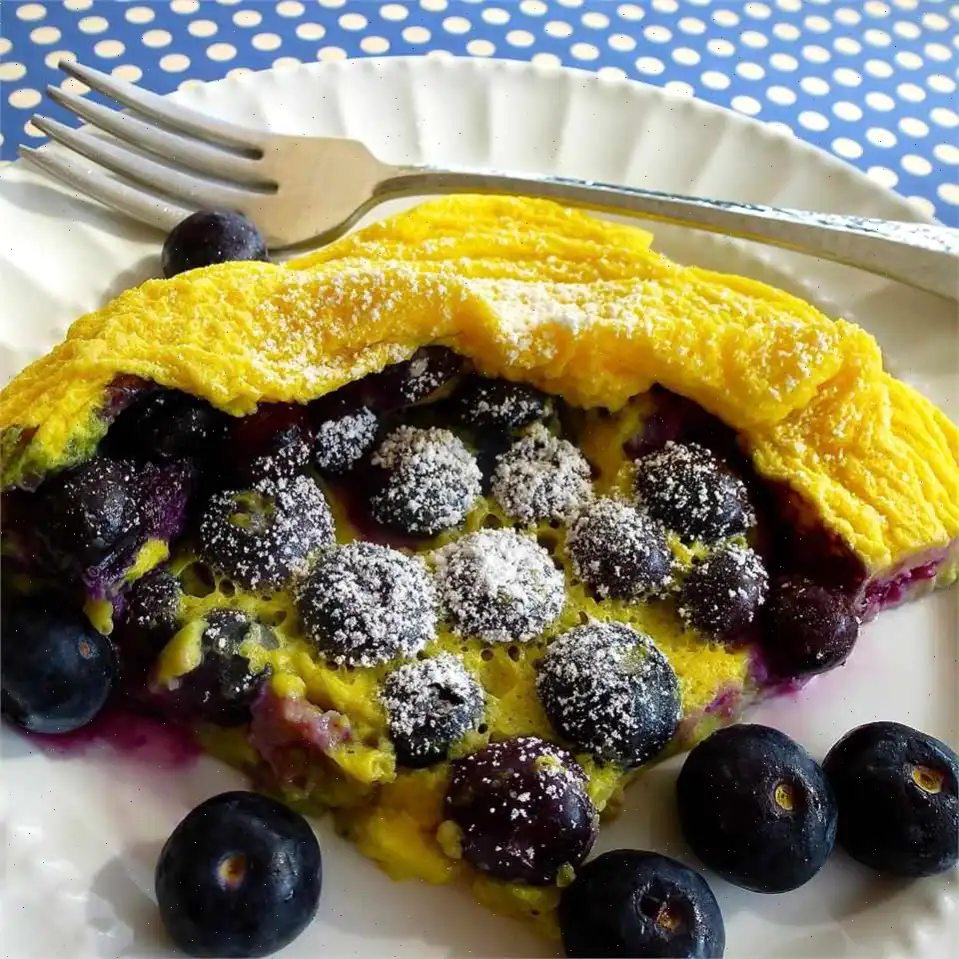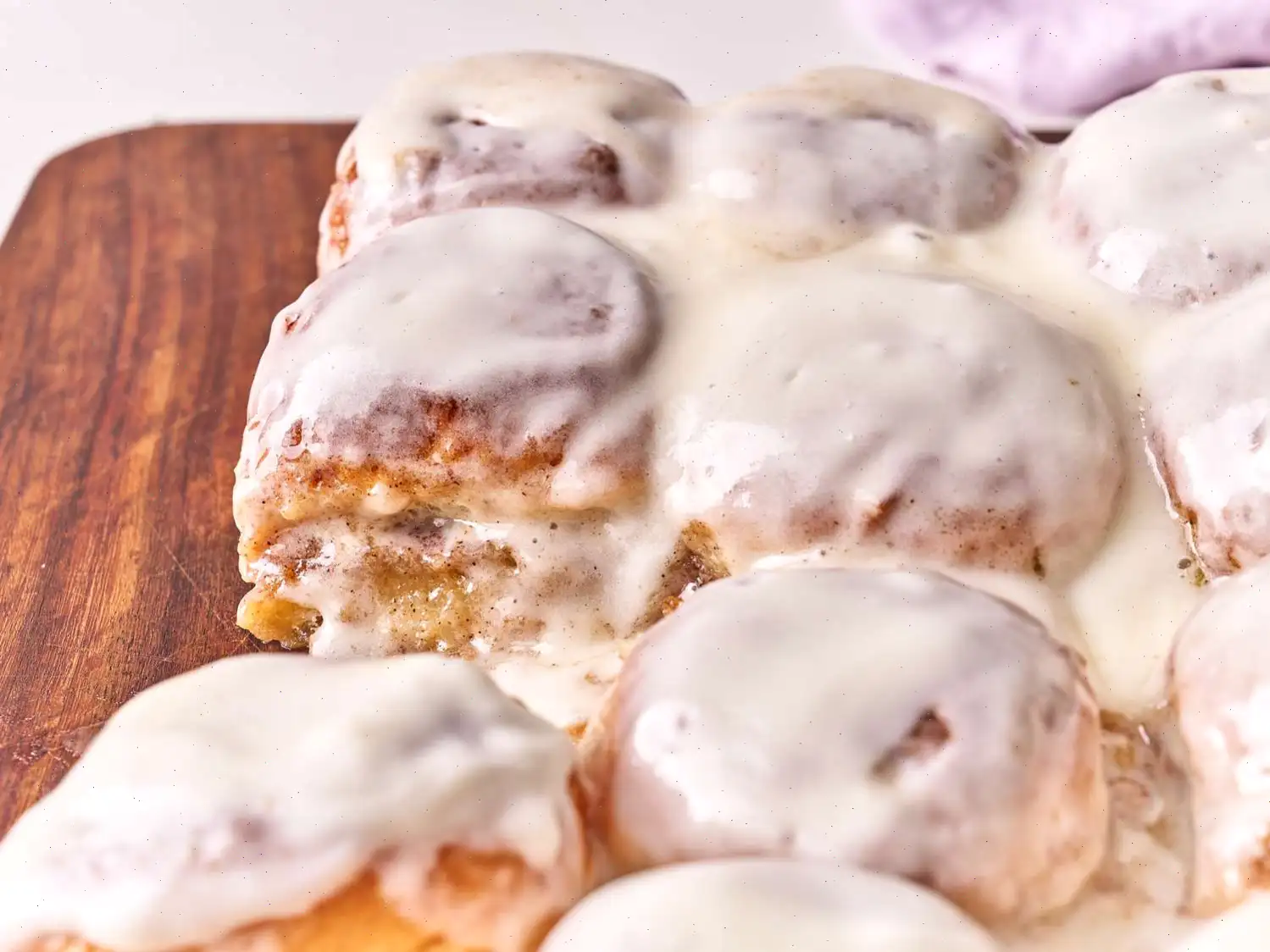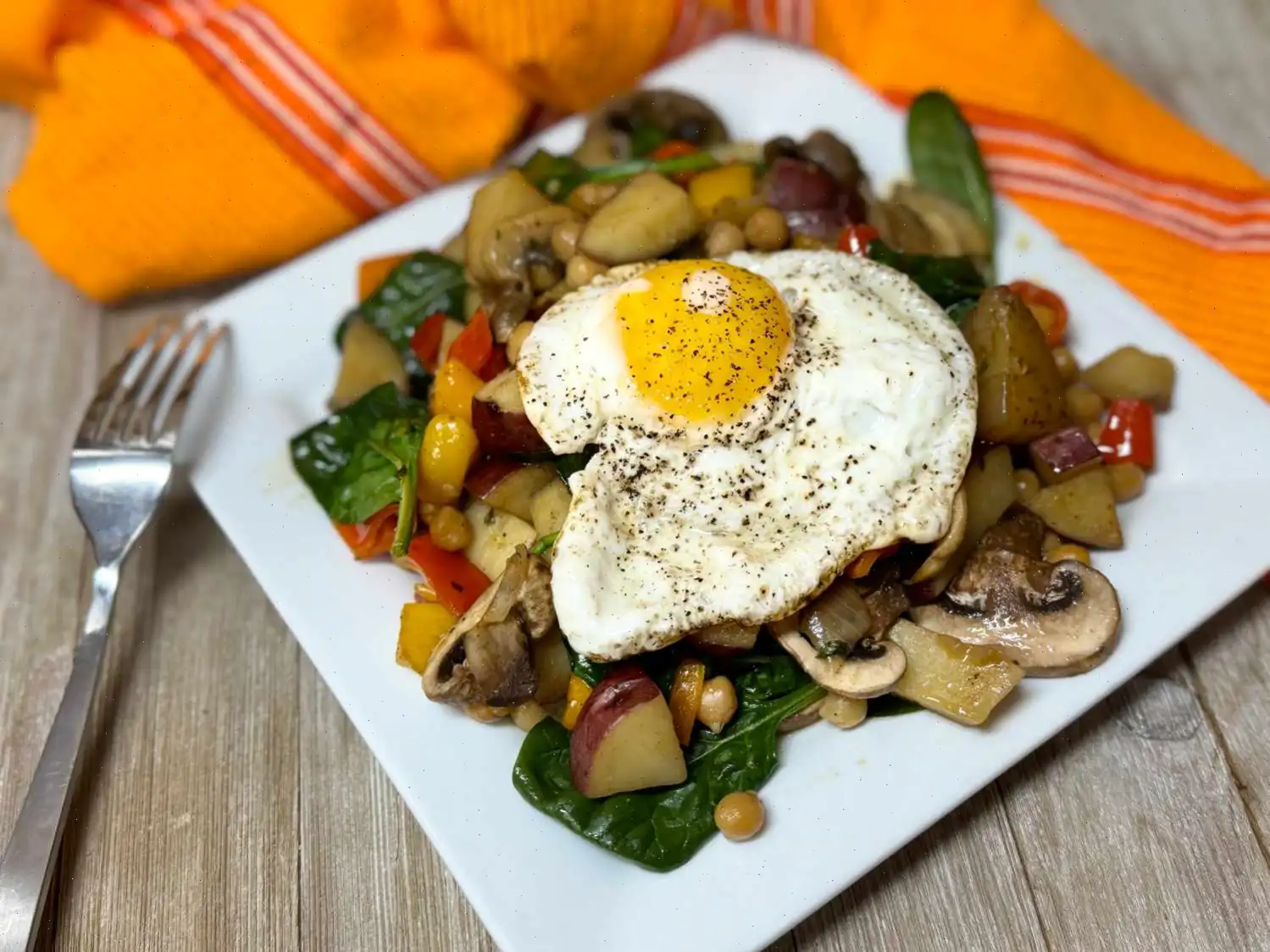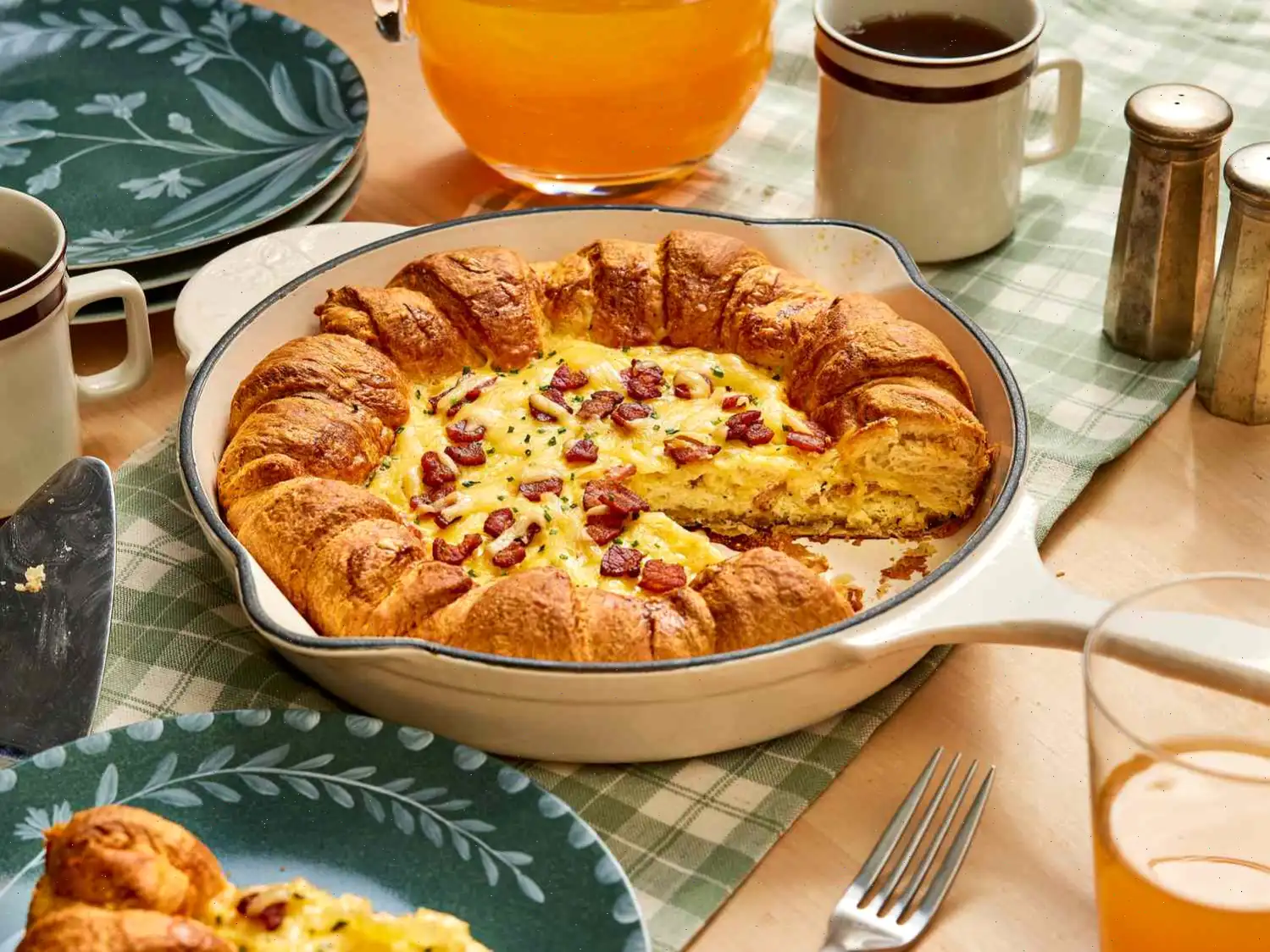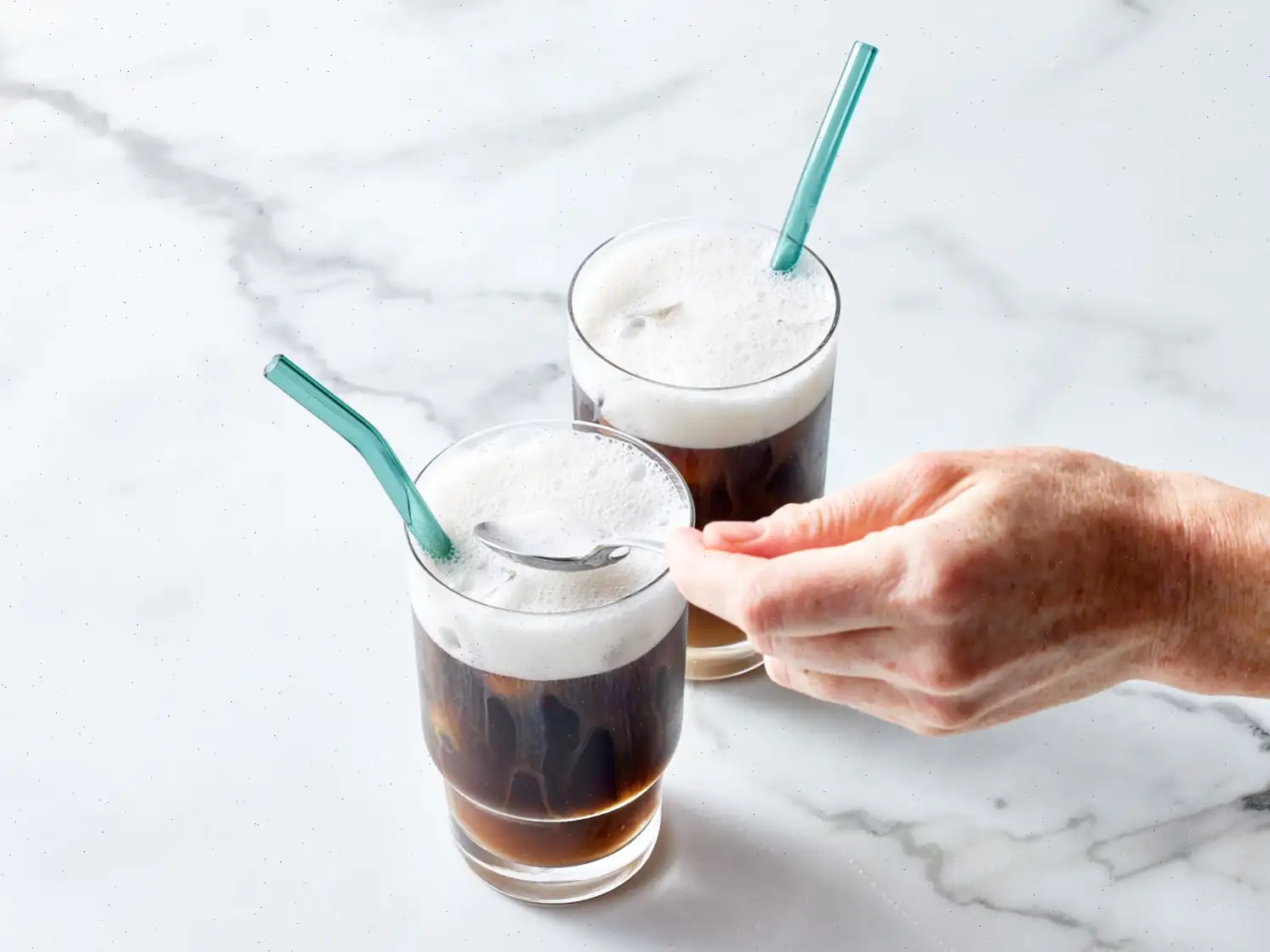
Microwave Blueberry Dutch Baby Recipe
Ingredients
This recipe was developed at its original yield. Ingredient amounts are automatically adjusted, but cooking times and steps remain unchanged. Note that not all recipes scale perfectly. Original recipe (1X) yields 4 servings.
- Cooking spray
- 5 large eggs
- 3 tablespoons all-purpose flour
- 3 tablespoons white sugar
- 2 tablespoons sour cream
- teaspoon salt
- 1 cup fresh blueberries
- 1 tablespoon confectioners' sugar, or as needed
Directions
- Spray a 1-quart microwave-safe casserole dish with cooking spray.
- In a bowl, beat the eggs by hand until slightly frothy.
- Add the flour, sugar, sour cream, and salt to the eggs, and continue to beat until all ingredients are fully incorporated.
- Pour the batter into the prepared casserole dish.
- Sprinkle the blueberries evenly over the batter.
- Microwave on high, turning the dish every minute, until the center is set. This should take about 4 to 5 minutes.
- Once done, divide the mixture onto plates and sprinkle with confectioners' sugar as desired.
Nutrition Facts (per serving)
| Calories | 191 |
| Total Fat | 8g |
| Saturated Fat | 3g |
| Cholesterol | 236mg |
| Sodium | 383mg |
| Total Carbohydrate | 22g |
| Dietary Fiber | 1g |
| Total Sugars | 15g |
| Protein | 9g |
| Vitamin C | 4mg |
| Calcium | 45mg |
| Iron | 2mg |
| Potassium | 129mg |
Servings Per Recipe: 4
Percent Daily Value based on a 2,000 calorie diet. Your daily values may be higher or lower depending on your calorie needs.
Microwave Blueberry Dutch Baby is a quick and easy twist on the traditional Dutch baby pancake, allowing you to enjoy a delicious, fluffy breakfast with minimal effort. This recipe requires just a few ingredients and can be prepared in under 15 minutes, making it the perfect choice for busy mornings.
Origin and History
The Dutch Baby pancake is thought to have originated in the United States, despite its name suggesting a Dutch connection. The name likely comes from the German "Dutch" referring to "Deutsch" or German, which is where the idea for a large, oven-baked pancake originated. Traditionally, these pancakes are baked in a hot oven, puffing up with a crisp, golden-brown exterior. The "Dutch Baby" became a popular dish in American households in the early 1900s, particularly in the Pacific Northwest. This microwave version brings the same concept to your kitchen but with the convenience of modern technology, cutting the cooking time significantly.
Regional Variations
Although the Dutch Baby is widely enjoyed across the United States, there are several regional takes on this classic dish. In some areas, the Dutch Baby is topped with powdered sugar, fresh fruit, or even whipped cream, making it a versatile breakfast or brunch option. In the Pacific Northwest, where the dish gained popularity, youll often find Dutch Babies served with local berries such as blueberries, huckleberries, or blackberries, which is why this microwave version uses fresh blueberries to bring a sweet and fruity contrast to the eggy pancake. Some regions might even top the Dutch Baby with syrup, while others prefer a squeeze of fresh lemon juice to cut through the richness.
What Sets it Apart
The Microwave Blueberry Dutch Baby stands out from similar dishes like regular pancakes or crepes in its unique texture and presentation. Unlike pancakes, which are made on a griddle, the Dutch Baby is baked (or microwaved) as a single, large pancake that puffs up around the edges and forms a custard-like center. The result is a light, airy dish with a slightly crispy outer layer. What makes the microwave version different is its speed and ease. While traditional Dutch Babies are baked in the oven for 20-25 minutes, this microwave variation can be made in just 5-7 minutes, making it perfect for mornings when time is tight but you still want something delicious.
Where It's Typically Served
Traditionally, Dutch Babies are served as a breakfast or brunch dish, often as a family-style shareable item. In restaurants, youll commonly see Dutch Babies served with a variety of toppings, from sweet options like berries, powdered sugar, and whipped cream, to savory versions topped with cheese, spinach, or bacon. The microwave variation can be enjoyed in the same way, either as an individual serving or sliced into pieces for sharing. Whether served at home for a cozy weekend breakfast or prepared quickly for a busy weekday morning, this recipe is versatile and can be adapted with different fruits or toppings according to your preference.
Fun Facts About the Dutch Baby
- The first recorded use of the term Dutch Baby is attributed to a restaurant called "Pancake Haus" in Seattle, Washington, in the early 1900s.
- While the exact origin of the name is debated, its thought that "Dutch" might have been used to describe the Germanic roots of the recipe, rather than having anything to do with the Netherlands.
- In some parts of the United States, Dutch Babies are referred to as German Pancakes because of their origins, but the name "Dutch Baby" has become the most widely recognized.
- The microwave version of the Dutch Baby was created as a quicker, easier way to enjoy this classic dish without needing an oven, perfect for busy mornings.
Conclusion
Microwave Blueberry Dutch Baby is a modern twist on a classic breakfast dish that allows you to enjoy the fluffiness and indulgence of a traditional Dutch Baby, all in a fraction of the time. Whether you're preparing it for yourself or serving it to guests, it's a simple and delicious option for any time of day. With the combination of fresh blueberries and a rich, eggy base, this dish offers both flavor and convenience, making it a great addition to your breakfast or brunch repertoire.
Comments
Charles White
11/15/2022 11:14:26 PM
Revised review: Our experience was just okay. We made the mistake of omitting sugar, hoping for a buttery flavor rather than a sweet one. However, we were surprised to find that the recipe didn't even include butter! It took an unusually long ten minutes to cook, resulting in an overcooked texture that we weren't fond of. As a substitute for sour cream, we used Greek yogurt, but we were still not satisfied with the end result. If we were to attempt this recipe again (which is unlikely), we would reduce the amount of eggs, increase the yogurt and flour, and most importantly, add butter! We were quite disappointed with how it turned out; in fact, my sister didn't even finish hers. In the future, we'll likely stick to our tried and true oven Dutch baby recipe.
Betty Harris
08/31/2024 11:00:19 AM
I made some adjustments to the recipe, but in retrospect, I should have probably stuck to the original instructions for my first try. The cooking time ended up being much longer than expected.
Andrew Hall
08/10/2023 12:41:57 AM
Here is a rewritten version of your review: This recipe is a speedy way to utilize any assortment of berries you have on hand. We enjoy fruit, so we included more than just one cup. I prepared it in a 9x9 square baking dish. It makes for a satisfying and relatively nutritious breakfast option.
Carolyn Allen
11/12/2024 07:51:15 AM
I was also disappointed by the lack of brown color and the rubbery texture of this product. It could definitely benefit from some additional flavorings like vanilla or almond to make it less bland. Unfortunately, I did not enjoy it and I'm sorry to say that it did not meet my expectations.


